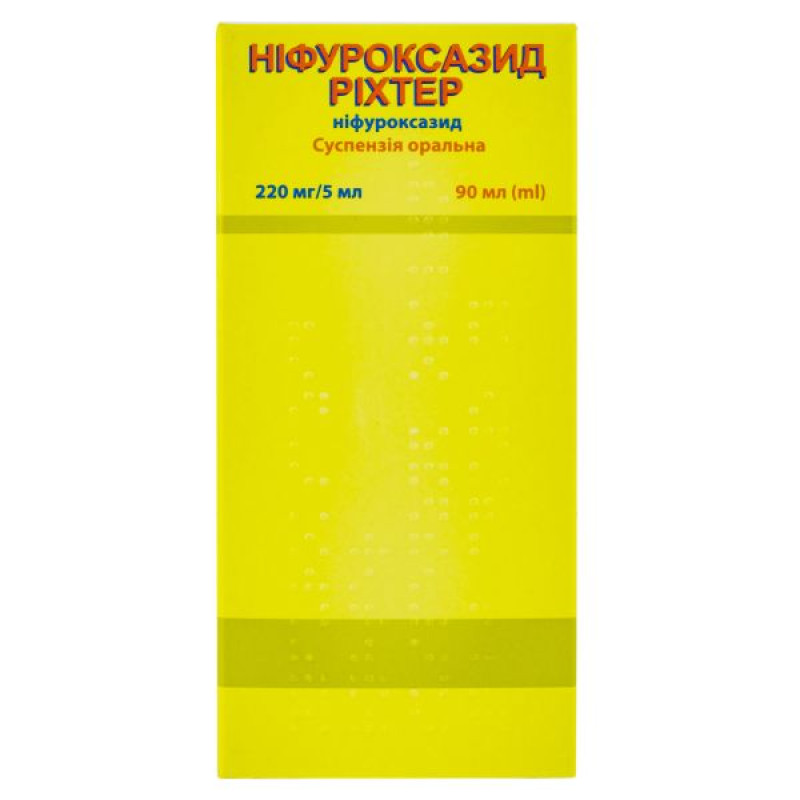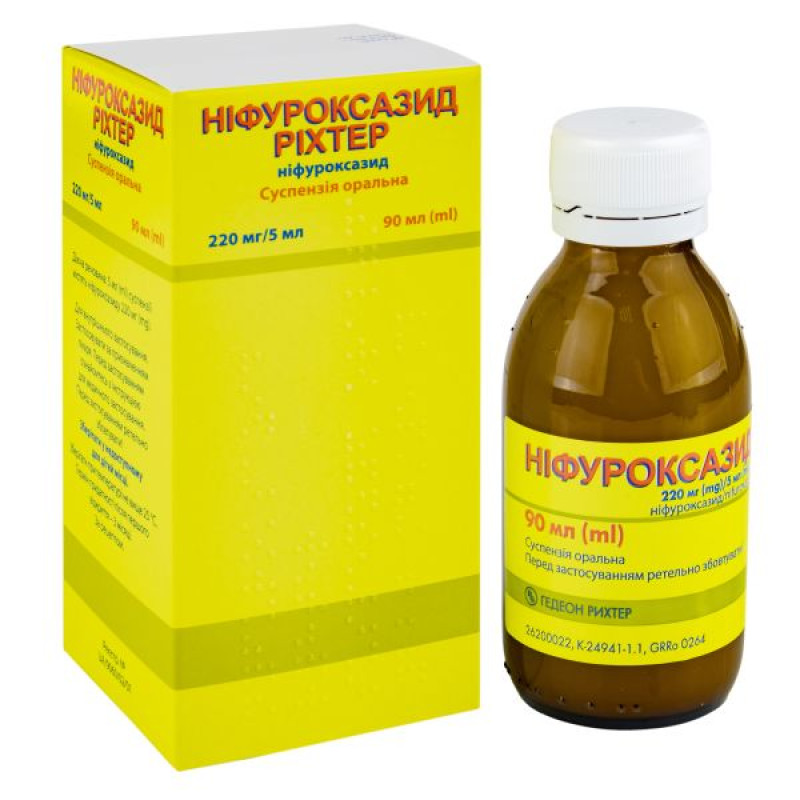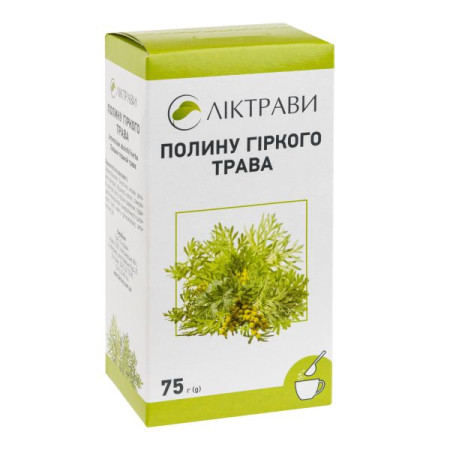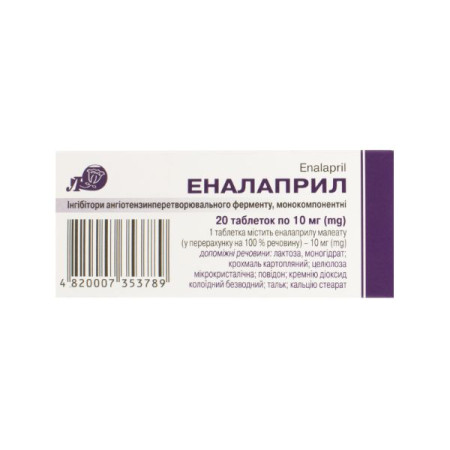Nifuroxazide Richter oral suspension 90 ml
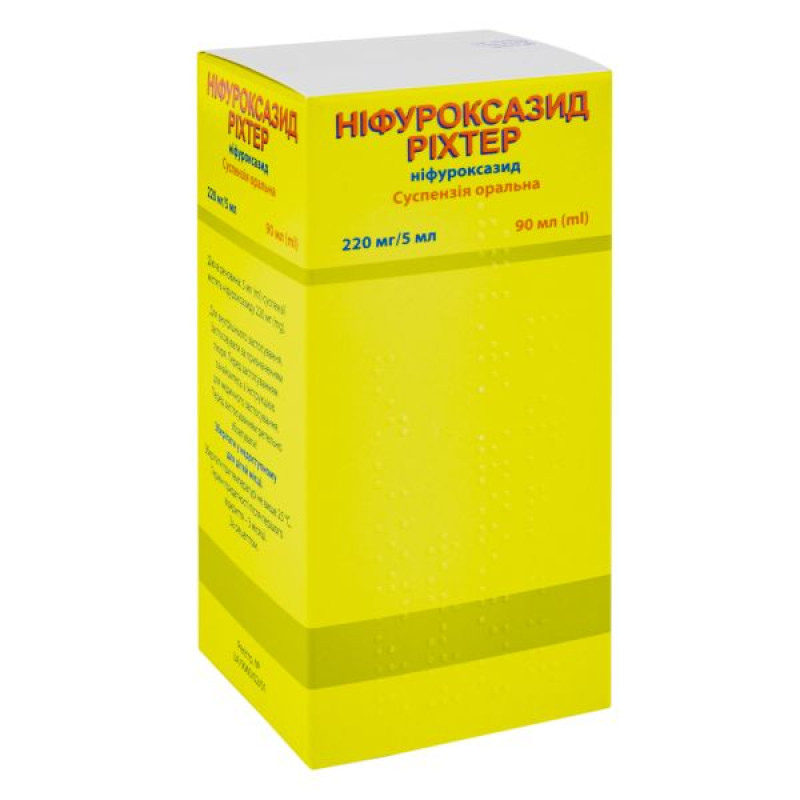
Instructions for Nifuroxazide Richter oral suspension 90 ml
Composition
active ingredient: nifuroxazide;
5 ml of suspension contain 220 mg of nifuroxazide (220 mg/5 ml);
excipients: carbomer, sucrose, sodium hydroxide (E 524), citric acid monohydrate (E 330), simethicone, methylparaben (E 218), banana essence, purified water.
Dosage form
Oral suspension.
Main physicochemical properties: light yellow suspension, with a banana odor; slightly settles during storage, but after shaking returns to a homogeneous suspension, leaving no dense sediment at the bottom of the bottle.
Pharmacotherapeutic group
Antimicrobial agents used to treat intestinal infections.
ATX code A07A X03.
Pharmacological properties
Pharmacodynamics.
Nifuroxazide is an antimicrobial drug, a derivative of nitrofuran. The mechanism of action is not fully understood. The antimicrobial and antiparasitic properties of nifuroxazide are probably due to the presence of an amino group. Local activity and lack of penetration into organs and tissues of the body make nifuroxazide unique compared to other nitrofuran derivatives, since there is no systemic effect of this antidiarrheal drug. Effective against gram-positive and gram-negative bacteria: Streptococcus pyogenes, Staphylococcus aureus, E.coly, Salmonellae, Shigellae.
Pharmacokinetics.
After oral administration, the drug is partially absorbed (10–20%) from the gastrointestinal tract and is extensively metabolized, with the main components circulating in the blood being metabolites.
In therapeutic doses, nifuroxazide practically does not suppress the normal intestinal microflora, does not cause the appearance of resistant microbial forms, as well as the development of cross-resistance of bacteria to other antibacterial drugs. The therapeutic effect is achieved from the first hours of treatment.
Preclinical safety data
Nifuroxazide demonstrates mutagenic potential.
The carcinogenic potential of nifuroxazide was evaluated in mice (50 individuals of each sex in a group) and rats (52 individuals of each sex in a group), which received nifuroxazide in the diet for 2 years at doses of 0, 200, 600 or 1800 mg/kg/day. Despite the mutagenic properties, the carcinogenicity of nifuroxazide was not proven in either mice or rats.
The doses administered to mice and rats (5400 mg/m2 and 10,800 mg/m2, respectively) were 11 and 22 times the maximum human dose of 1800 mg (493 mg/m2 for a patient weighing 60 kg) on a body surface area basis.
Indication
Acute diarrhea of infectious etiology.
Contraindication
Hypersensitivity to nifuroxazide, to other 5-nitrofuran derivatives or to other components of the drug.
Interaction with other medicinal products and other types of interactions
Nifuroxazide is not recommended for use simultaneously with sorbents, products containing alcohol, drugs that may cause antabuse reactions, and drugs that depress the central nervous system.
Application features
Nifuroxazide should not be used for more than 7 days. There are no indications for long-term therapy. If diarrhea does not stop within 3 days of starting treatment, in-depth diagnostics are necessary to determine the cause of the symptoms. Antibiotic therapy may be necessary.
In case of severe invasive diarrhea with clinical manifestations of general weakness, fever, and symptoms of intoxication, it is advisable to use a systemic antibiotic, since nifuroxazide is not absorbed from the gastrointestinal tract.
In the event of a hypersensitivity reaction (shortness of breath, swelling of the face, lips, tongue, skin rashes, itching), nifuroxazide should be discontinued immediately.
Food intake should be maintained, but during diarrhea, dietary recommendations should be considered: avoid fresh vegetables and fruits, spicy foods, frozen foods and cold drinks. The decision to consume dairy products should be made on a case-by-case basis. Baked meat and rice are recommended.
During the treatment of diarrhea, constant additional oral rehydration is required to compensate for fluid loss caused by diarrhea: it is necessary to consume large amounts of drinks containing salt and sugar (based on the average daily need of 2 liters of water for an adult).
In case of severe and prolonged diarrhea, severe vomiting or anorexia, intravenous rehydration is necessary depending on the age and condition of the patient. When oral or intravenous rehydration is used, the instructions for dilution and use of the solutions intended for this purpose must be followed.
Patients should not consume alcoholic beverages during treatment with nifuroxazide due to the risk of developing a disulfiram-like reaction, which is manifested by exacerbation of diarrhea, vomiting, abdominal pain, a feeling of heat in the face and upper body, hyperemia, tinnitus, difficulty breathing, tachycardia.
The medicine contains methyl parahydroxybenzoate (E 218), which may cause an allergic reaction (delayed type).
Use during pregnancy or breastfeeding
Pregnancy. There are limited data on the use of nifuroxazide in pregnant women. Animal data on reproductive toxicity are insufficient. Nifuroxazide exhibits mutagenic potential. Therefore, nifuroxazide is not recommended for use during pregnancy and should not be used in women of childbearing potential not using effective contraception.
Breastfeeding. It is not known whether nifuroxazide or its metabolites are excreted in human milk. Since nifuroxazide has low bioavailability (absorption from the gastrointestinal tract is approximately 10-20% of the dose), its amount in milk is likely to be low. However, an effect on the gastrointestinal microbiome of breast-fed infants cannot be excluded. Due to the lack of clinical experience, the use of medicinal products containing nifuroxazide is not recommended during breastfeeding.
Fertility: Based on animal studies, there is insufficient information on the effects of nifuroxazide on fertility.
The ability to influence the reaction speed when driving or working with other mechanisms
Does not affect.
Method of administration and doses
Method of application
Take orally, regardless of meals.
Doses
The maximum daily dose of nifuroxazide is 800 mg. The duration of treatment is no more than 7 days.
Children over 2 years of age: 5 ml of suspension 3 times a day.
Adults: 5 ml of suspension 4 times a day.
Before use, the suspension should be shaken thoroughly until a homogeneous suspension is obtained. The measured dose of the suspension can be washed down with water.
Children
Do not prescribe to children under 2 years of age.
Overdose
There is no specific information on the symptoms of nifuroxazide overdose.
One case of overdose with nifuroxazide oral suspension has been reported in a 2-year-old child who ingested an unknown amount of the drug. This child developed drowsiness and diarrhea, which subsequently resolved. If an overdose with nifuroxazide is suspected, the patient should be closely monitored and symptomatic and supportive treatment should be administered.
Side effects
Blood and lymphatic system disorders: One case of granulocytopenia has been described.
On the part of the immune system: allergic reactions, including angioedema (Quincke's edema), anaphylactic shock, urticaria and skin itching. The occurrence of an allergic reaction requires discontinuation of the drug. In the future, the patient should avoid taking nifuroxazide and other nitrofuran derivatives.
On the part of the gastrointestinal tract: individual cases of hypersensitivity to nifuroxazide are manifested by abdominal pain, nausea, vomiting and exacerbation of diarrhea. In the event of the appearance of such symptoms of minor intensity, there is no need to use special therapy or discontinue the use of nifuroxazide, since the symptoms quickly subside. If the exacerbation is severe, nifuroxazide should be discontinued. In the future, the patient should avoid taking nifuroxazide and other nitrofuran derivatives.
Skin and subcutaneous tissue disorders: rarely, skin reactions in the form of skin rash and itching may occur.
One case of pustulosis in an elderly person and one case of pruritus nodosa in the presence of contact allergy to nifuroxazide have been reported.
Expiration date
3 years.
The shelf life after first opening is 3 months.
Storage conditions
Store at a temperature not exceeding 25 °C.
Keep out of the reach and sight of children.
Packaging
90 ml in a bottle; 1 bottle with a dosing spoon in a cardboard box.
Vacation category
According to the recipe.
Producer
LLC "Gedeon Richter Poland".
Location of the manufacturer and address of its place of business.
5, Kn. J. Ponyatowskiego Street, Grodzisk Mazowiecki, 05-825, Poland.
Applicant
Gedeon Richter OJSC, Hungary.
Location of the applicant and/or the applicant's representative.
H-1103, Budapest, Demrei Street 19-21, Hungary.
There are no reviews for this product.
There are no reviews for this product, be the first to leave your review.
No questions about this product, be the first and ask your question.







